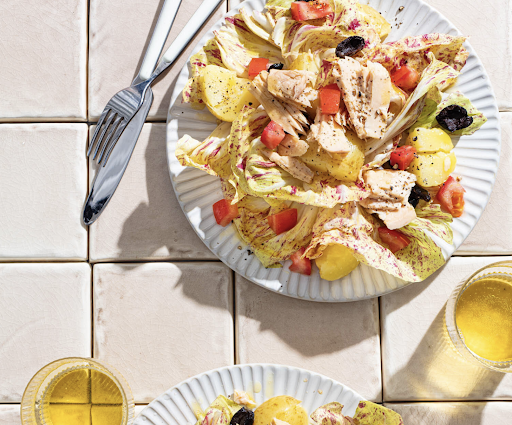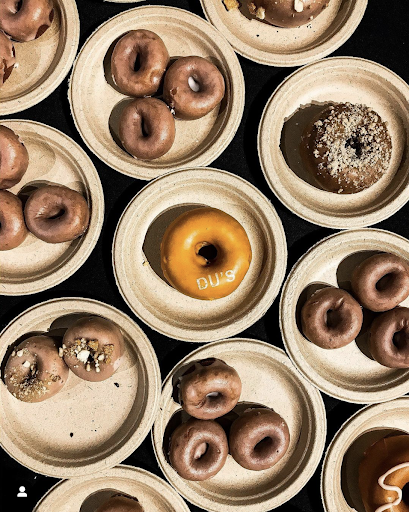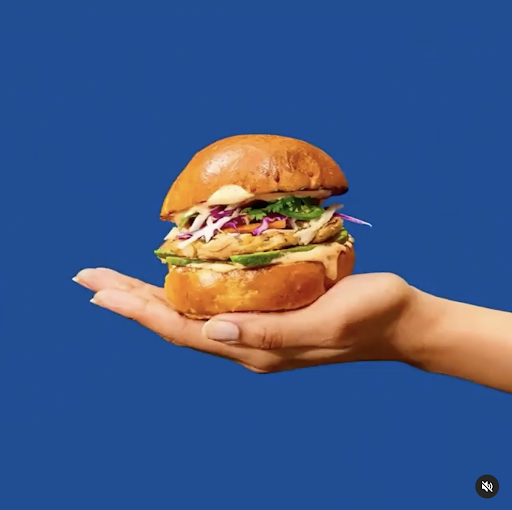Check Out This Out:
Share
- Jump to:
Shooting gorgeous food should be as simple as picking up your camera, aiming and capturing the photo, right? Well yes, it should be — but it’s not.
Luckily, some amazing photographers have let us in on their little secrets: the tools and methods they use everyday to make some of the best food photography around.
Here is a proper breakdown of all must-knows behind creating the best food photography for restaurants — sharing both the obvious and not-so-obvious tips to creating magic. Along the way, we’ll provide some food photography predictions for 2022, sharing the direction that we think industry is headed.
3 So-Obvious Food Photography For Restaurant Tips
We know you’ve read/heard of these one’s over-and-over again, but here we are. This quick checklist is worth reiterating before tackling the not-so-obvious tips to creating the best food photography for restaurants.
1. Natural lighting is your best friend.
We all know this one, but it’s totally crucial. Wherever the light is, go to it. Shoot in front of a window: the more direct sunlight, the more lighting you can play with and manipulate. We’ll give you more info on how to manipulate lighting later on in this article.

Image source: Erin Scott Photography.
2. Work in groups of three.
When shooting multiple dishes, create triangles using groups of three. This creates structure with simplicity, promoting a balance of composition. Working in groups of three visually shares all three elements equally, creating a flow in attention. Feel free to incorporate food looks and cutlery into these dimensional food images.

3. Camera is key.
Lighting is huge and despite everyone’s push on iPhones being the new camera for photography, it’s not quite comparable to a DSLR.
If being a food photographer is your passion and even better yet, your money maker, invest in a camera that suits your needs.
When comparing cameras, look at quality, depth, compactability and lens interchangeability. From here, play with shutter speed and lighting to produce high-quality, great photos.

For a full list of top-rated cameras for food photography and their specs visit Camera Gurus.
8 Not-So-Obvious Tips in Restaurant Photography
Here is what you came for — the hero products of the shoot. These tips are sometimes forgotten in photography guides and others are just not reiterated nearly enough. Here are our 8 not-so-obvious tips to create the best food photography for restaurants.
1. Backdrop, backdrop, backdrop.
This is your starting point. The backdrop to your image is just as crucial as the hero product; assisting in setting the scene, but not taking from it. For any and all food photography, a vinyl backdrop is recommended due to its reliability, easy-clean up, and non-reflective material. Many photographers incorporate their location into the shot, moving from a traditional backdrop to possibly a restaurant’s table.
Wherever the destination, make sure that the background is complementary to the hero product(s), keeping the background/backdrop complementary to the shot and clean — or not, depending on the story.

For more guidance on choosing the best backdrop for your shoot, visit Food Photography Academy.
2. Your hero is your main focus.
The focus is the food and nothing else. Eliminate clutter that doesn’t serve this focus. If the props are eating up the picture, then move them off set. If you want to capture different elements within your hero product(s), shoot close ups to showcase these elements. With whatever direction you are going, you will want to tell a story within your images. If you are showcasing desserts from a bakery, use the packaging that it came in and/or delicate utensils they provide to customers as props. Remember, the branding can always assist in showcasing the hero product(s).
3. Natural lighting can always use assistance.
Natural lighting is a great place to start. With natural lighting, you can play around and see what you’re missing from the image and/or what needs to be manipulated. For instance, direct natural lighting can cause harsh shadowing and/or highlighting, which can drastically alter the feel and focus of the shot. To assist, incorporate a diffuser between your station and the window that the direct natural light is shining through.
Natural lighting can also be paired well with different forms of artificial lighting, studio lighting or smaller light boxes to help manipulate perspective and create a more luxe appeal to your images.

Image source: Erin Scott Photography
4. Don’t upstage your food.
Props are fun, but not the focus. Food photographers use the food to storytell and the props should assist in that process. Do not upstage your hero product(s) by using props that do not make sense within the scene. This means avoid colors, patterns and space that outmatches your food. Stick to incorporating ingredients, finishes, cutlery, dishes and packaging, showcasing how the dish was made.

5. Use ingredients as your props.
Your hero product(s) best friend is the ingredients that comprise it. Food photographers use these ingredients to showcase the dressing of the burger or the plentiful layers of a burrito. Not only is this presenting the end product, but the story of how it became.
If you are showcasing a mouth-watering cheeseburger, use the ingredients and garnishes to help tell the story. Food styling is just as much of an art as the photography itself — hence the huge demand in food stylists when booking a shoot.
6. Incorporate movement.
Incorporate movement, only if it makes sense of course. Whether your product is a modern Kombucha or a cool-kids cereal, incorporate movement that seems natural to it’s setting. This means no forced contributions; only incorporate movement if it aids in storytelling.
If you don’t have movement that makes sense, invite some hands into the shot — you know, that vessel that takes the food from the plate to the mouth.
“Hands make food photos feel more realistic. If you want to avoid having a food photo look too staged, get some hands in there,” - Sandy Noto, FoxTrot.

7. Clean your lense throughout the shoot.
When shooting food, remember you are playing with all the goodness that comes with it.
“One thing I ALWAYS make sure to do when shooting hot food is clean my lens throughout the shoot. Steam on the lens can ruin your shots! I’m tagged in photos daily where I can tell exactly what happened. Once you notice it, you’ll never unsee it,” Erin Byrne, 312 Food.

Steam Effect. Image source: Phoode
8. Post-production editing.
A consistent look across either your portfolio or your project is important. To maintain this consistency, reference your previous photos as a barometer for both saturation and exposure when taking it into lightroom. Whether you are a professional photographer or just a foodie/blogger that likes to take food shots, take your photos of food into photoshop to alter lighting, imperfections and/or perspective.
When working with a brand to shoot a project, reference their past projects prior to shooting and then once-again in post-production to adhere to their image/vision.


Image source: Mostly.Eats on Instagram (1, 2)
2022 Food Photography Predictions
Predicting many things during a year of a pandemic seems a bit risky, but food photography has a safe space here. Here are 3 of our 2022 food photography predictions.
1. From Still Photography to GIFs
Everyone likes movement, especially recently. GIFs are still a bit more niche within food photography, but this niche is getting more traction everyday. This style of photography is usable not just on websites, apps, and social media, but all virtual forms of marketing. These can serve as more interactive pieces that storytell a bit further than traditional still photography.


Image source: Ficcaluciano on Instagram
2. Healthy Ingredients as Props
Health is on a rise, pretty much constantly. Using ingredients as props hit mainstream restaurants in 2021 and is here to stay. Healthy ingredients will be seen in more enterprise restaurant brands, promoting the lifestyle within their marketing. Expect more food synergy photography, incorporating multiple beneficial ingredients to showcase the brand's focus.

A quick snapshot & conclusion
With all the tips surrounding food photography, we hope this breakdown served some not-so-obvious tips to take into your next project. From food styling to post-production, there are so many things that go into producing an A+ photoshoot. Don’t be afraid to think outside of the box and explore new creative ideas. Bon appetit!